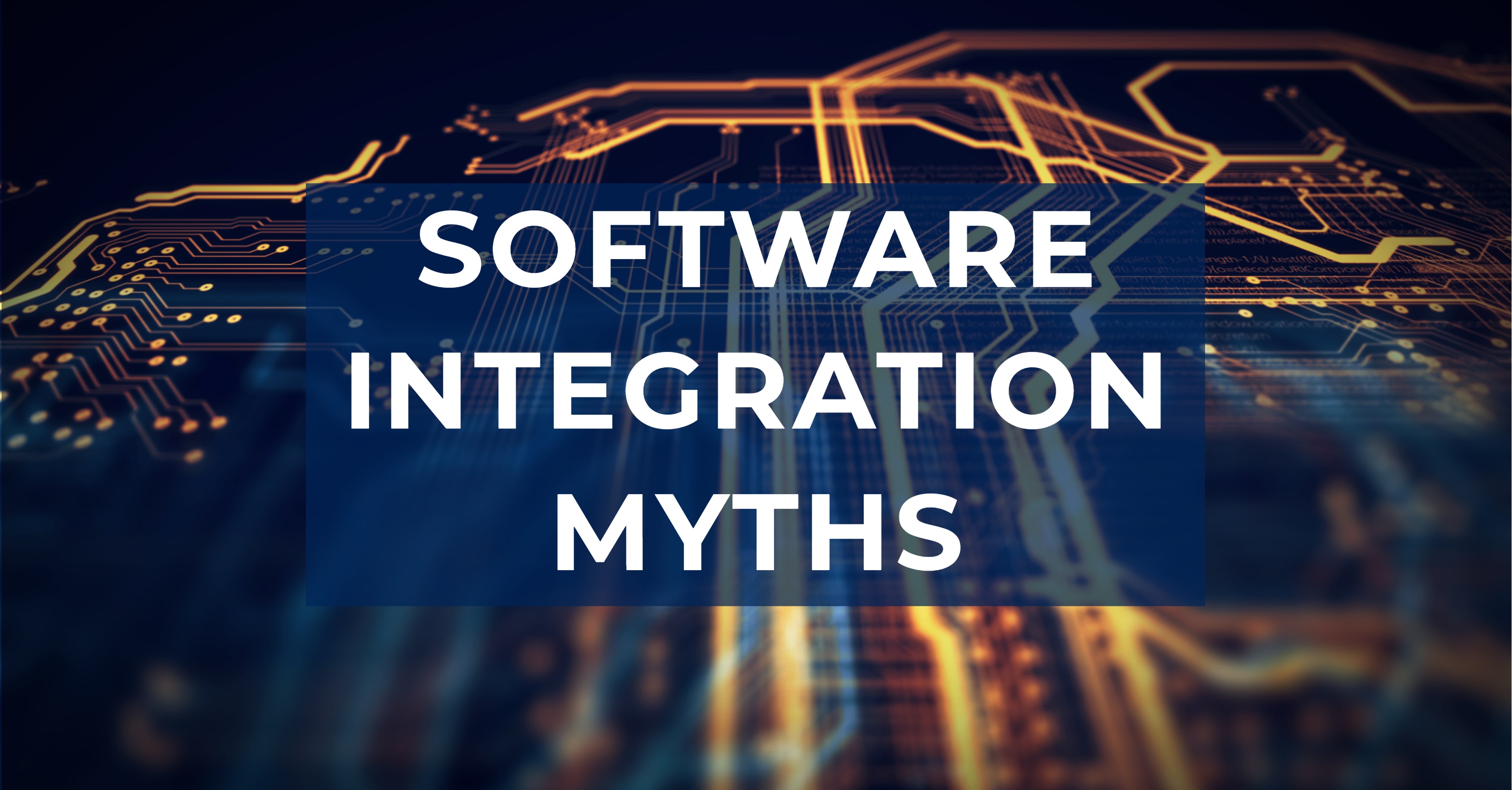Software Integration is Easier Than You Think
In a software integration, two separate systems—ERP and CRM, for example—are connected to create a single source of truth. Data is synced between the platforms to maintain consistent, up-to-date data and streamline processes.
Sounds good enough, so why are some businesses on the fence about systems integration? The truth is that a plethora of myths abound about most digital projects, including enterprise software integration. These misconceptions often scare manufacturers and distributors from adopting digital strategies that could optimize their operations.
Don’t let software integration myths hold you back. We’re here to impart the truth and explain why software integration is easier than you think.
Too Complex
Some businesses fear that software integrations are far too complex to execute and manage. These concerns originate from point-to-point, or app-to-app, integrations. Using this method, data is moved from one software instance to another via a hand-coded connector. More often than not, point-to-point integration is unfeasible for manufacturers and distributors. IT teams, especially those on the smaller side, can’t write codes for multiple connectors and take care of upgrades and regression testing. This method is also more prone to errors.
Fortunately, point-to-point integration isn’t the only way. Today, we have pre-built connectors and applications on the market that can be quickly installed. At Datix, we built Unity, an ERP integration solution that puts all the work in the hands of our consultants. We rapidly install the solution and handle errors throughout its lifetime at no additional cost. As demonstrated in one of our recent Unity projects, our solution isn’t prone to errors. When we integrated a client’s BisTrack system with Salesforce, we were able to sync mass amounts of data without a single error at go-live:
- 111,729 customer contacts from Salesforce into BisTrack
- 10,097 products from BisTrack into Salesforce
- 2,672 orders from BisTrack into Salesforce
Unity provides instant bi-directional synchronization without requiring coding or hassle from our clients. The solution makes it easy for any company to gain a single source of truth to manage their data and operations.
Expensive and Time-Consuming
The last thing you probably want to do after finishing a software implementation is undergo another IT project. But don’t think of an integration as another implementation. Integrations take far less time and are much more affordable. In fact, our Unity projects are often finished within a month, with the deployment of the solution itself taking only a few days.
Additionally, when it comes to software integration, it’s important to look at the full picture. Don’t just consider the initial cost and project duration; think of all the time and money you’ll save once your solution is up and running. Systems integration maximizes the value of your software by automating processes and updating data across your platforms. These improvements result in higher levels of efficiency and substantial ROI.
Unnecessary
Not everyone is willing to embrace change. After all, if it ain’t broke, don’t fix it. However, this attitude doesn’t cut it in a competitive marketplace. Success means finding innovative strategies to accelerate processes, improve customer experiences and increase the value of your data. Software integration does all three:
- By connecting your front and back-office systems, you achieve a higher level of efficiency by automating processes from end to end of your enterprise. That means faster lead times and order fulfillment.
- With faster lead times and order fulfillment come happier customers. Your buyers will receive products and services on time. Furthermore, sales and service reps have better access to back-end data that can be used to immediately address their concerns and personalize their experiences.
- Without an integration, employees are tasked to manually enter duplicate data across your platforms. This results in human error and wasted time. By connecting your software, you eradicate dual entries and protect your data integrity. Plus, everyone has access to the same information, increasing visibility and collaboration.
After integration projects, users often notice past inefficiencies and issues that they didn’t realize were holding the business back. An integration smooths over common pain points to make organizations ready to capitalize on new opportunities.
Wrap Up
Software integration is a no-brainer, especially when you team up with Datix. For over 20 years, we’ve connected countless business platforms for manufacturers and distributors. Unity is designed to connect Epicor ERP with a variety of front-end systems, such as Microsoft Dynamics 365, Salesforce and HubSpot. Our scalable integration grows with your business, driving future enterprise productivity.
Now that we’ve debunked those myths, are you ready to get started on building your connected enterprise? Get in touch with Datix’s software experts today and download our Unity success story to learn more!
{{cta(‘770c1544-d87d-4acb-9fc4-7a25e1385094′,’justifycenter’)}}


